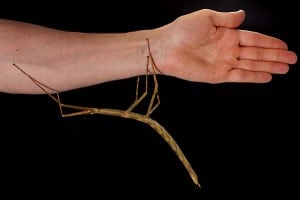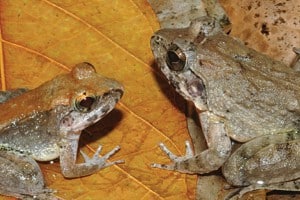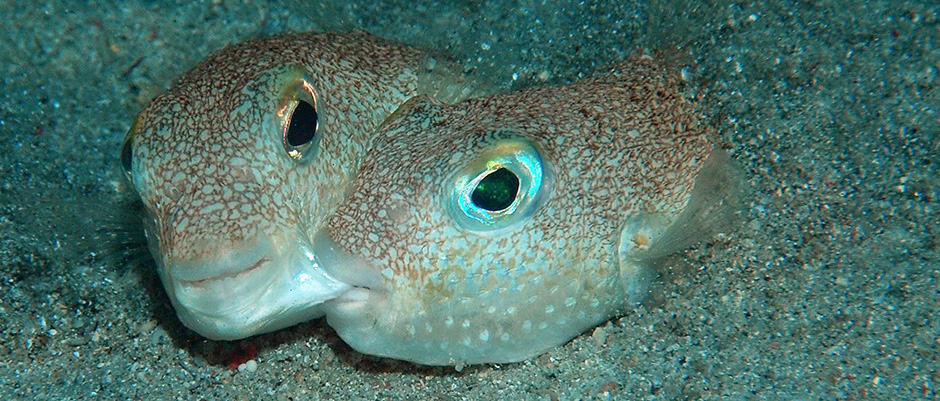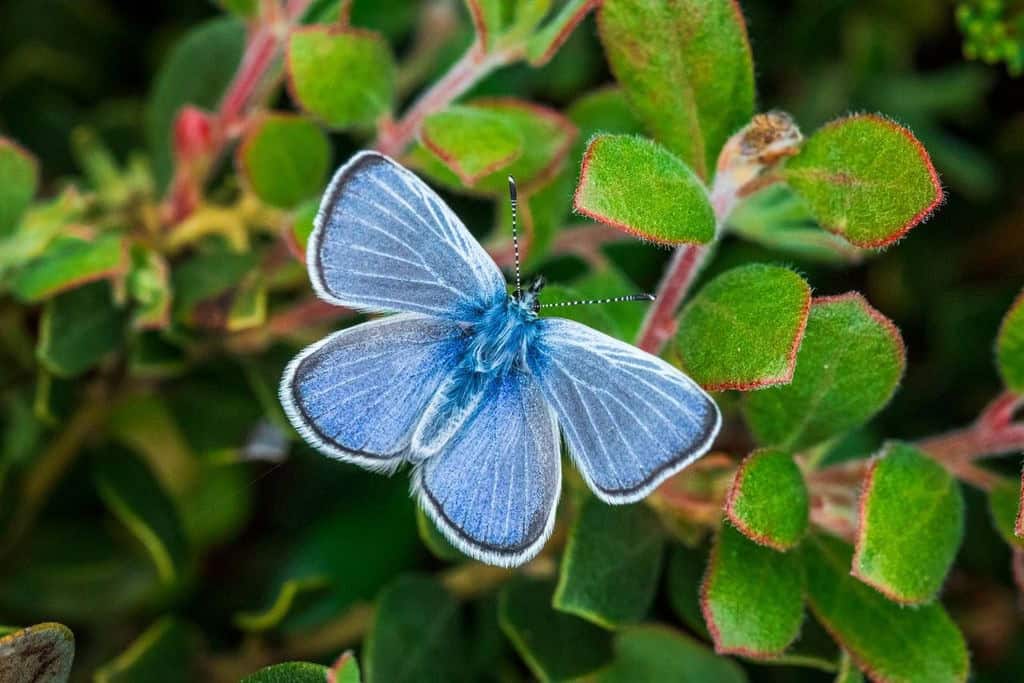Share this article
Cartwheeling Spider Among Top 10 New Species of 2015
A spider that performs a cartwheel trick to escape from predators, a nine-inch walking stick and a fanged frog are among the top 10 new species of 2015, according to the State University of New York’s College of Environmental Science and Forestry (ESF).
“The last vast unexplored frontier on Earth is the biosphere. We have only begun to explore the astonishing origin, history and diversity of life,” said Quentin Wheeler, ESF president and founding director of the College’s International Institute for Species Exploration.

A female walking stick (Phryganistria tamdaoensis) on a researcher’s arm.
Image Credit: Jonathan Brecko
An international committee of taxonomists chose the top 10 species from a total of 18,000 species that were named the year before. The list has been announced every year since 2008 with the purpose of calling attention to discoveries. Scientists believe there are still around 10 million species to be discovered on the planet — five times the number currently known by scientists — but many of these species are going extinct faster than they can be identified.
“An inventory of plants and animals begun in the 18th century continues apace with the discovery of about 18,000 additional species each year,” Wheeler said. “The nearly 2 million species named to date represent a small fraction of an estimated 12 million. Among the remaining 10 million are irreplaceable clues to our own origins, a detailed blueprint of how the biosphere self-organized, and precious clues to better, more efficient, and more sustainable ways to meet human needs while conserving wild living things. It is time to mount a mission to planet Earth to distinguish, describe, name and classify its life-forms before it is too late. The Top 10 is a reminder of the wonders awaiting us.”

The fanged frog (Limnonectes larvaepartus) gives birth to live tadpoles in small pools.
Image Credit: Jim McGuire
One of the species, the fanged frog (Limnonectes larvaepartus), found in the island of Sulawesi in Indonesia, gives live birth to young tadpoles, according to a previous article by The Wildlife Society describing how one female gave birth right in researcher Jim McGuire’s hand. The extent of the frog’s range on the island is not yet known.
Another one of the top 10 species was discovered in North America a little too late for conservation efforts — dozens of millions of years too late, in fact. Anzu wyliei has been called “the chicken from hell” due to the rough chicken-like appearance of the feathered dinosaur. The animals were omnivores standing more than five feet tall, measuring more than 10 feet in length.
The remaining species that make up the list are Torquigener albomaculosus, a puffer fish that wriggles around to make complex geometric circles for spawning nests on the ocean floor around Japan; Dendrogramma enigmatica, strange mushroom-looking creatures related to jellyfish; Phyllodesmium acanthorhinum, a sea creature — also around Japan; Tillandsia religiosa, a bromeliad that grows up to five feet tall and is incorporated into elaborate Christmas altar scenes depicting the birth of Christ in parts of Mexico; and Balanophora coralliformis, an endangered parasitic coral plant from the Philippines that feeds on nearby plants.
Header Image:
A male (right) pufferfish (Torquigener albomaculosus) bites on the left cheek of a female while they spawn.
Image Credit: Yoji Okata








